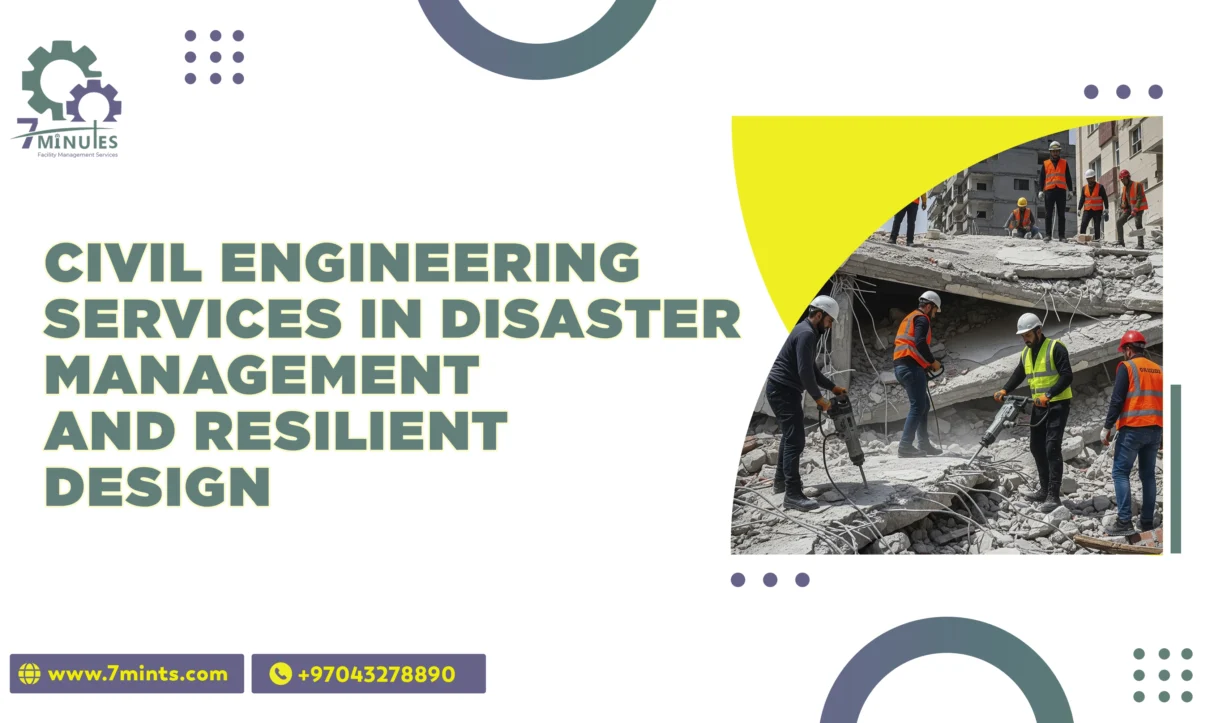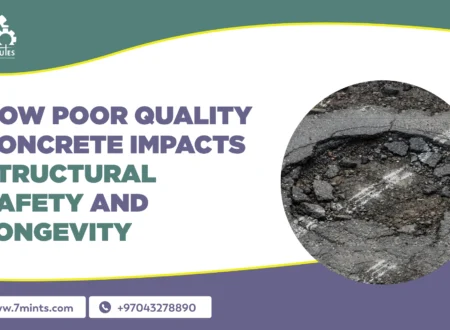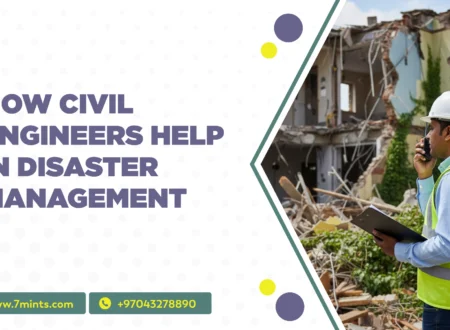Natural or man-made, a disaster on any occasion poses huge challenges to societies throughout the world. Given the increased occurrence of events such as earthquakes, floods, and wildfires, and their greater intensity, it has become imperative to have disaster management systems in place. Civil engineering stands at the forefront to provide expertise and techniques for both the prevention and management of disasters and in designing infrastructure that can resist and recover from such events. This blog extensively discusses civil engineering services for disaster management and resilient design, describing each key aspect in detail.
-
Mitigation
Mitigation involves minimizing a disaster’s effects in the period before its occurrence. Civil engineers are involved in designing and constructing structures against natural hazards-disaster-proof buildings against earthquakes, flood barriers, wind-resistant structures, etc. They also promote land-use planning and zoning laws that lessen exposure to hazards. Put in another way, these laws help to ensure that places that are susceptible to a hazard are not heavily populated or developed.
-
Preparedness
Preparedness includes planning and organizing resources and systems for efficient disaster response. Civil engineers plan disaster management in great detail, set emergency evacuation routes, and design shelters that will accommodate displaced populations. They also ensure that an emergency is aptly understood by society through community education, drills, and workshops, while authorities are guided on procedures to follow so that they can act swiftly once disaster strikes. This is to prepare everyone and act together proactively, thereby avoiding confusion and chaos when a real emergency-unplanned disaster-occurs.
-
Response
As soon as a disaster hits, come into force the response phase, with activities aimed at saving lives and preventing additional damage. Civil engineers undergo rapid technical structural assessments to check whether buildings, bridges, and other infrastructures are safe in a disaster-hit area. Further, they help in providing temporary shelter, restoring essential services like water and electricity, and giving technical backup to emergency teams. Their implementation of measures helps in stopping affected communities from waiting too long for help and stabilizing important infrastructure, thereby preventing secondary disasters.
-
Recovery
Civil engineers assess damages, sort the list based on priorities of reconstruction, and rehabilitate the infrastructure, including roads, bridges, and utilities. They incorporate lessons learned from the disasters when preparing designs so that the newly rebuilt designs can better endure against such events. Recovery also includes restoring the natural environment and fulfilling the social needs of displaced communities, and therefore, this phase is a must for long-term sustainability.
-
Risk Assessment
Risk assessment is one of the first and most important steps in Disaster Management since it concerns the identification and analysis of potential hazards and vulnerabilities. Along this line, civil engineers use such advanced tools as GIS and hazard mapping to weigh the likelihood of occurrence and the optimum impact of any disaster on either infrastructure or community.
-
Designing Resilient Infrastructure
Civil engineering forms the core activity in resilient design, centering on the installation of structures that can survive extreme events and recover rapidly from them—and, hence, more on buildings that resist earthquakes with seismic isolations, flood control levees and dams, and hurricane-resisting structures made with reinforced materials. In addition to the newer constructions, there is a need to retrofit the existing infrastructure for its safety conduction to the latest standards by means of the use of new materials and designs. Resilient infrastructure entails saving lives as well as properties and carrying out essential services during and after disasters.
-
Rapid Damage Assessment
Immediately after the emergency response, civil engineers undertake precise damage surveys concerning infrastructure and buildings. These damage assessments serve as the basis for reconstruction priorities and resource allocations. Engineers, working in collaboration with emergency management teams, identify those critical facilities that need urgent attention, such as hospitals and key bridges. Even the swiftest damage assessments render support to decision-making and expedite recovery.
-
Planning and Preparedness
Planning and preparedness are at the core of good disaster management. Civil engineers are responsible for the formulation and enhancement of disaster management plans and the setting up of interfacing protocols, and may also act as designers for the various evacuation routes. They also provide for the allocation of resources and may design temporary infrastructure to support emergency services.
-
Community Engagement and Education
In some communities, civil engineers actively raise awareness of disaster risks and preparedness measures. They hold public workshops, circulate flyers, and cooperate with municipal governments to encourage the enforcement of building codes and safety practices. Check out our latest blog post on 3D Printing in Civil Engineering: Innovations and Applications
-
Integration of Disaster Risk Reduction in Development
Disaster risk reduction should be woven into development to foster long-term resilience. Civil engineers ensure that increased vulnerability to hazards is not created by way of new infrastructural developments or urban developments through resilient building codes or, at least, environmental impact assessments. Among the areas they pursue are sustainable land use, climate-sensitive zoning, and green infrastructure. Integrating disaster risk reduction in development at every stage enables engineers to assist communities to be safer, more sustainable, and better equipped to withstand a future disaster.
Case Studies in the Resilient Design
Earthquake-Resistant Buildings in Japan
Since Japan has been suffering from earthquakes for ages, it has developed the most technically advanced seismic design standards in the world. After the 1995 Kobe earthquake, building codes were updated to provide for seismic isolation and tuned mass dampers. Many modern buildings suffered very little damage in the 2011 Tohoku earthquake, partly because of these innovations, thus demonstrating the benefits of resilient design.
India’s Smart Cities Initiative
Increasingly, Indian cities are turning to smart technologies and sustainable urban designs to build their disaster resilience. According to their urban renewal plan, Bhubaneswar is now developing flood-resistant drains and improved stormwater management. Supported by the government and with international collaboration, the cities seek to build energy-efficient buildings, sensor-based traffic control systems, and zoning laws that help climate adaptation in preparation for an uncertain infrastructural future.
Future of Civil Engineering Services in Disaster Management
With the advancement of technology and an ever-increasing knowledge of disaster risks, the role of civil engineering in disaster management is changing rapidly. Nowadays, civil engineers use data analytics, artificial intelligence, and innovative construction materials to create adaptive and sustainable infrastructure. The integration of environmental concerns and people promotes a more holistic and better approach to disaster management. With the ongoing climate change effect aggravating such risks, someone will always need the services of civil engineering to create resilient societies.
Conclusion
Whereas civil engineering services form the backbone of effective disaster management and resilient design, civil engineers work from risk assessment and mitigation through to rapid response and sustainable recovery to protect life and property. Contact us as they do more than develop technical solutions; they work with communities and educate people on integrating resilience into the development process at every step. As disasters become more complex, civil engineers will be instrumental in ensuring that communities are safer, stronger, and able to adapt to the future.










1 Comment
Comments are closed.